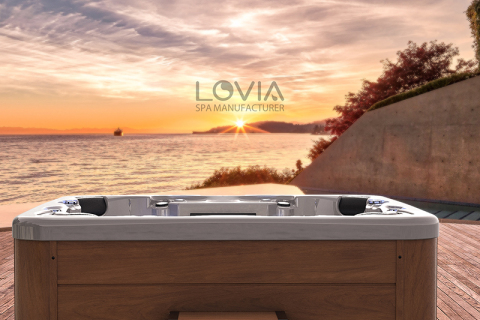
- Home
- >
News
The top 5 best American-made hot tub brands: 1. Hot Spring (brand founded in 1977), 2. Jacuzzi (brand founded in 1956), 3. Caldera Spas (brand founded in 1976), 4. Sundance Spas (brand founded in 1979), 5. Bullfrog Spas (brand founded in 1996).
Top five best hot tub chemical brands: 1. Leisure Time brand, 2. SpaGuard brand, 3. Clorox Pool&Spa brand, 4. Baqua Spa brand, 5. Hot Spring brand.
The main parts of a hot tub include heaters, pumps, filtration systems, control panels, nozzles, and housings. Each part plays a vital role in the normal operation and user experience of a hot tub. Among them, heaters and pumps are the most critical and expensive parts.
This article will focus on five hot tub brands: Jacuzzi®, HotSpring®, Caldera Spas®, Sundance Spas®, and Bullfrog Spas®. We will analyze the characteristics of each brand in detail and give you a comprehensive understanding of these five highly regarded hot tub brands.
Although direct evidence is limited, some studies and clinical reports indicate that public or unclean hot tubs may increase the risk of urinary tract infections. Hot tubs with pathogens, especially those in public places, are more likely to cause infection.
The dimensions of a hot tub are usually expressed in length, width, and height. For a 6-person hot tub, the general size range is as follows: ● Length: about 80 to 90 inches (203 to 229 cm) ● Width: about 80 to 90 inches (203 to 229 cm) ● Height: about 34 to 38 inches (86 to 97 cm)
The design and use characteristics of hot tubs make them an ideal environment for the growth of Legionella. Legionella grows most vigorously in the temperature range of 25-45 degrees Celsius, and the water temperature in hot tubs is usually within this range.
First of all, from a technical point of view, hot tubs can be placed outdoors. Many hot tubs are designed with outdoor use in mind and have waterproof, windproof and weatherproof properties.
Balboa hot tubs have three operating modes: standard, economy, and sleep. These modes mainly affect heating, which affects energy consumption. Standard mode keeps the water temperature constant. Economy mode reduces energy consumption. Sleep mode turns the heater off completely.
The core components and control systems of Balboa hot tubs are manufactured primarily in our factory in California, USA. Specifically, Balboa's California facility is responsible for the design, development and production of hot tub control systems and related electronics.
Some people add chlorine to their hot tubs once a week, while others prefer to add a small amount after each use. It is generally recommended that you test the chlorine content in the water every day and add chlorine as needed to keep the chlorine content within the appropriate range (1-3 ppm).
Dr. Li, a dermatologist, pointed out: "Hot tubs can improve the appearance of the skin to a certain extent by promoting blood circulation and relaxing muscles. However, to completely eliminate cellulite, hot tubs alone are not enough."












